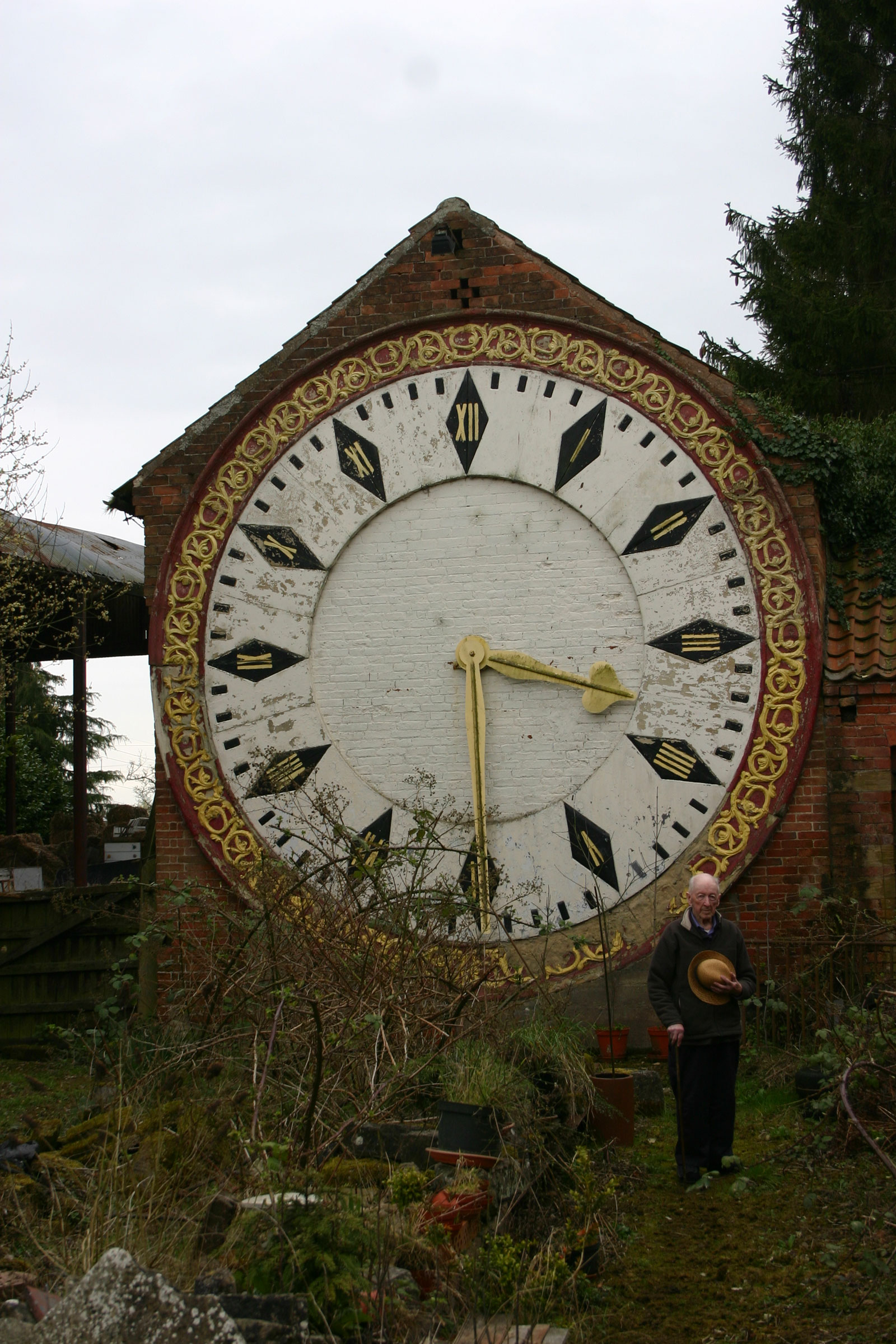Leftovers / Each Eye Is Haunted
Caring for a poorly thing
Matthew Mead
“Leftovers” is a column that investigates the cultural significance of detritus.

To my eye, the clock looked like a ruin. Frostbitten shards of its face lay about in the weeds. In places, northerly winds had worn the gilt ornamentation around the dial’s circumference to a sandy, amorphous mass. Everywhere, paint flaked. Mold grew on a slender lip above the lower numerals. At around fourteen feet high, the clock was only just accommodated on the side of the old barn. Brickwork was visible beneath the whitewash at the center of its face. The clock’s movement had stopped months before my arrival, but the downward-dragging force of ruination continued to act on the clock’s hands, pulling them from five-after to half-past three.[1] There, the hands had finally seized. All else moved on: vines crept over the top of the barn and down the north face of the pitched terracotta; weeds grew seven or eight feet tall; cracks ran in the walls of the barn.
Between the lens of my borrowed camera and the clock, Roland Hoggard, straw hat held to his chest, cane in hand, wore the easy dignity of the custodian. The diminishing effect of the clock on Roland’s slight frame made clear that this monumental timepiece was not just out of time, but out of place. A work of industrial engineering, made to be viewed from a distance and from below, it was now strangely domesticated in this rural garden. It has since come to remind me of the pasticcio in the Monument Court of Sir John Soane’s Museum—an enormous column made of architectural fragments that sits in a small atrium, boxed in on all sides by the walls of number 13 Lincoln’s Inn Fields. The clock too is a ruin of some artifice, similarly outsized, similarly domesticated, and, likewise, baffling.[2] Only by an act of imagination could the citizens it once marshalled be conjured, or the story of its journey here be told. The clock at least is easier to read than Soane’s puzzling pasticcio; looking at it, we already know this is not an encounter with the remains of some distant culture, but with the uncanny ruins of our own recent past.
• • •
The St. Pancras terminus clock had for a century—from 1868, when the station began operating, until sometime in the late 1960s, at the nadir of British Railway’s decline—regulated the movement of travelers within what was, at one time, the world’s largest single-span structure. At 245½ feet wide, William Henry Barlow’s train shed was an engineering marvel; the clock, made by the London manufacturer Dent, was its visual centerpiece.[3] Built at a scale to match the cavernous space, it sat just below a pointed arch that seemed to mimic the neo-Gothic architecture of George Gilbert Scott’s Midland Grand Hotel, to which it was attached.